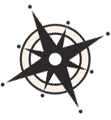Nearshore freshwater habitats are an important component of the complex and dynamic Great Lakes Basin and are vital to the success of Wisconsin's coastal communities. These areas are a key priority for restoration and protection because they are the source of drinking water for most coastal communities, are the areas of the lakes where most human recreation (e.g., swimming, boating, and fishing) and education opportunities occur, and are the critical ecological link between watersheds and the open waters of the Great Lakes.
Getting Started
-

Getting Started – Exploring and Understanding Nearshore Habitats Tool
This digital atlas resource shoes the location of cultural resources, environmental research and monitoring, and human activities along Lake Michigan. It is a great tool for managers, stakeholders, and the general public to see the location of important lake resources and how these resources are distributed relative to one another. -

GLAHF Explorer Map
This interactive web mapping application contains a variety of physical, chemical and biological data for the Great Lakes basin and provides access to a multitude of data summaries, other products and tools. -

GLAHF Explorer Tutorial Training
This web tutorial is a basic explaination on how to use the Great Lakes Aquatic Habitat Framework tool. -

Nearshore Waters of the Great Lakes Publication
This resource is designed to provide background information on the nearshore water elements of the Great Lakes coastal ecosystems. -

Ecology of Freshwater Shore Zones Publication
This publication identifies the specifics of shore zones and summarizes what is known about the ecology of freshwater shore zones.
Assessing Nearshore Habitats
-

The Great Lakes Nearshore Framework Publication
This planning tool is intended to address new and existent challenges to the nearshore waters and habitats of the Great Lakes. -

Coastal & Nearshore Fish Habitat Assessment Tool
This tool is an integrated assessment of coastal and nearshore habitats of the Great Lakes with the goal to assess and map available fish habitat based on species specific habitat conditions in both the coastal margin and nearshore zone. -

Needs Assessment Guide Training
This resource is a step-by-step guide to understanding and completing a needs assessment with coastal issue-based case studies and sample reports for guidance.
Mapping Nearshore Habitats
-

Benthic Terrain Modeler Tool
This tool is used by coastal and marine resource managers in combination with bathymetric datasets, or data from the underwater depth of ocean and lake floors, to analyze seafloor characteristics. -

Benthic Terrain Modeler Tutorial for ArcGIS v10.1 Tutorial
This resource is a written tutorial that introduces you to the Benthic Terrain Modeler for ArcGIS v10.1 -

Using Benthic Habitat Data for Ecosystem Management Training
This training resource provides a brief overview of what benthic habitats are why they are important to the environmental and economic health of the coast, providing examples from both freshwater and saltwater. -

GLAHF Spatial Database Data
This resource is a spatial database relevant to the Great Lakes basin and is organized into several categories, including biological and environmental. -

Great Lakes GIS Map Layers Data
This resource is a quick list of GIS layers available for the Great Lakes Basin, including geographic boundaries, hydrology, fishery and miscellaneous
Restoration and Management
-

Science in the Great Lakes Mapper Tool
This tool spatially displays information about scientific research and monitoring efforts throughout the Great Lakes and can be used by researchers and managers to strategicially plan, implemenet and analyze restoration activities within Wisconsin. -

Using Cultural Ecosystem Services to Inform Restoration to Inform Restoration Priorities in the Laurentian Great Lakes Publication
Allan, J David, et al. (2015). Using cultural ecosystem services to inform restoration priorities in the Laurentian Great Lakes. Frontier Ecological Environment, 13 (8): 418-424. This publication focuses on the use of cultural ecosystem services as an informative component to guiding large-scale restoration efforts in the Great Lakes. -

Conserving Freshwater and Coastal Resources in a Changing Climate Publication
This resource provides useful information on the effects climate change has on freshwater habitats and can be a useful tool when considering restoration and management efforts.
Other Relevant Resources
-

Guidance for Benthic Habitat Mapping: An Aerial Photographic Approach Guide
This online guide provides direction for benthic habitat mapping from aerial photographic approach. This approach may not be appropriate in all situations and where aerial photography of habitats is not present. -

Evaluating Coastal and Nearshore Projects and Data Needs in the Great Lakes Story
This story from NOAA's Digital Coast highlights coastal and nearshore habitat assessment workshops conducted in states within the Great Lakes basin, including Wisconsin, and the identification of potential project locations.
